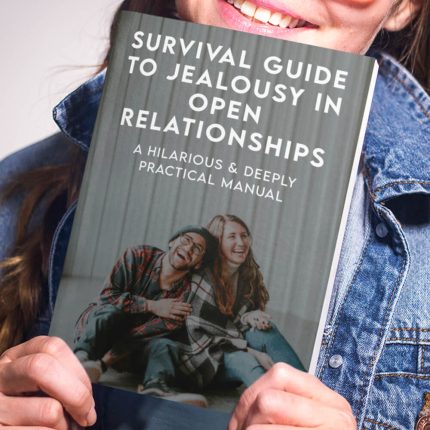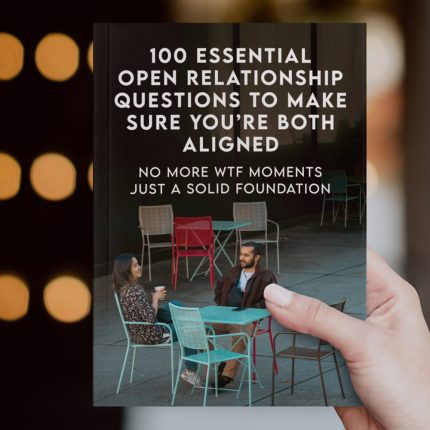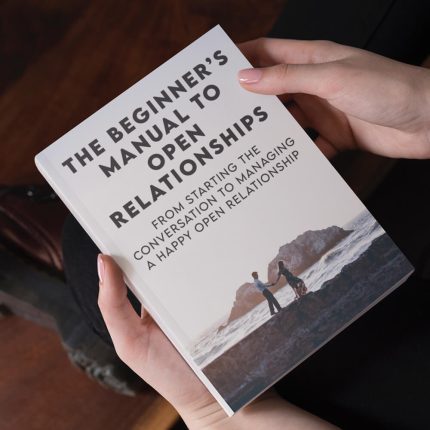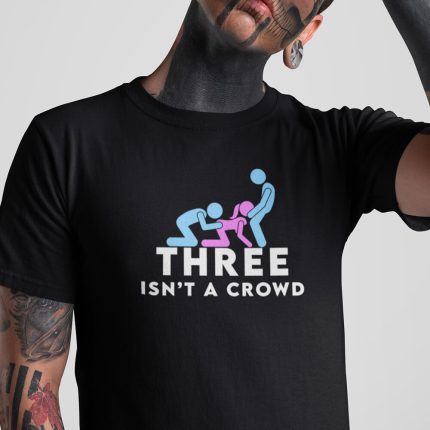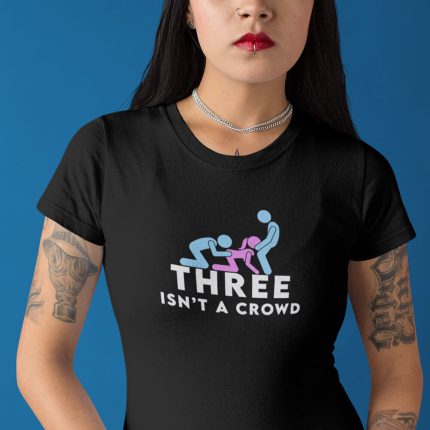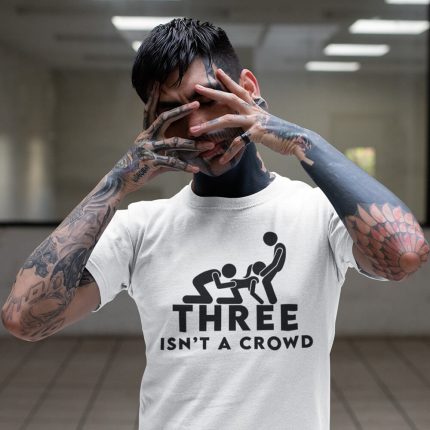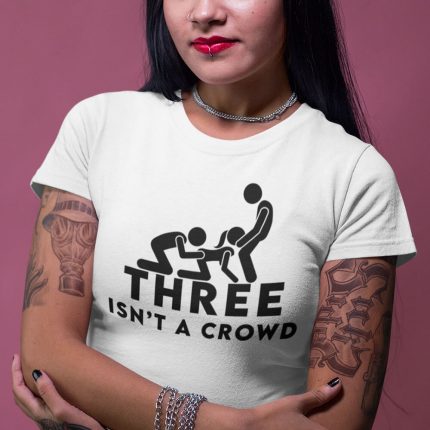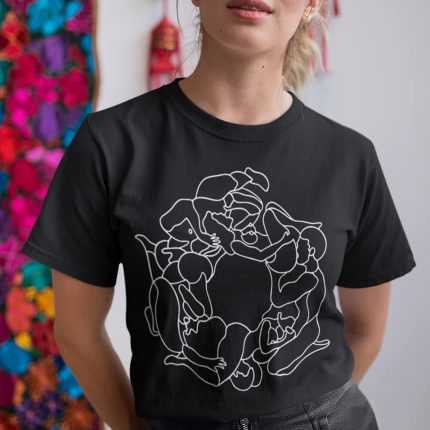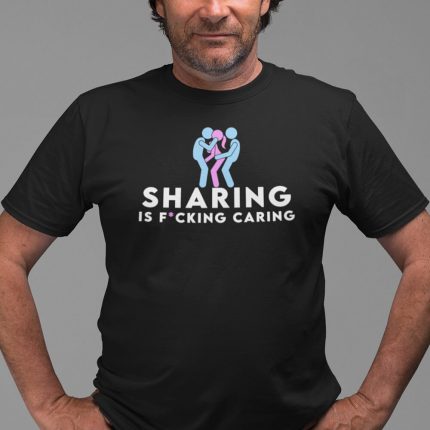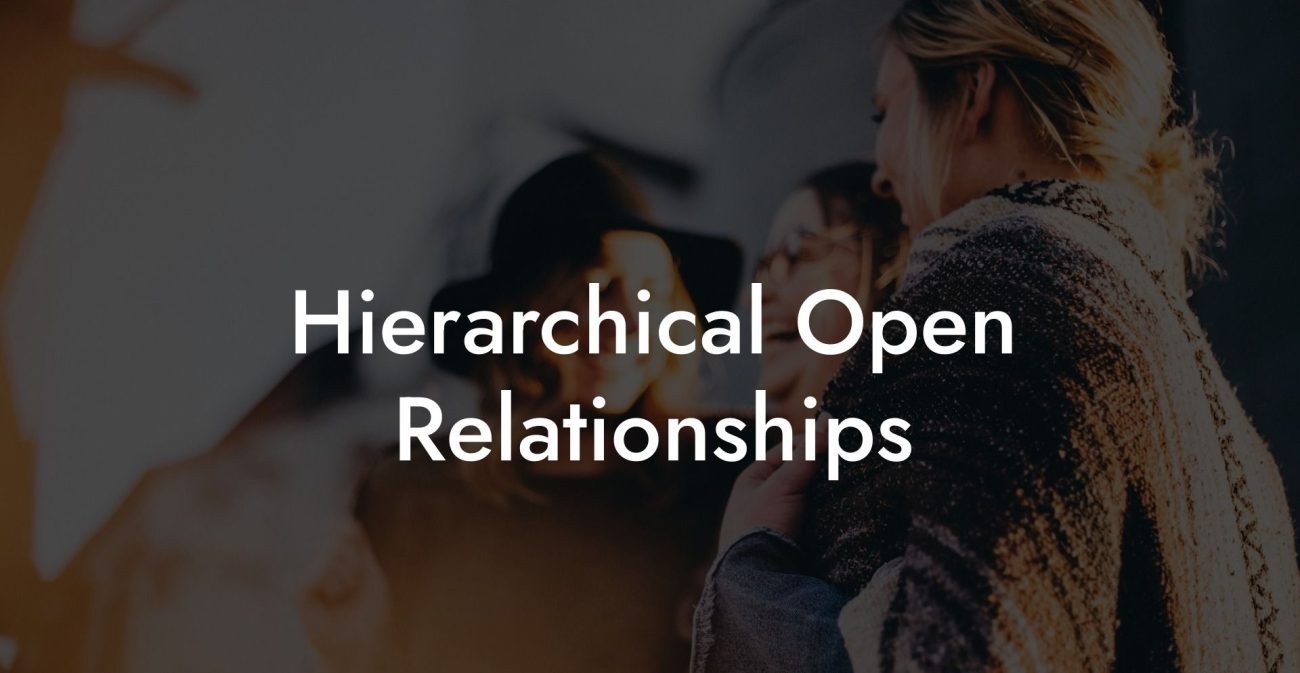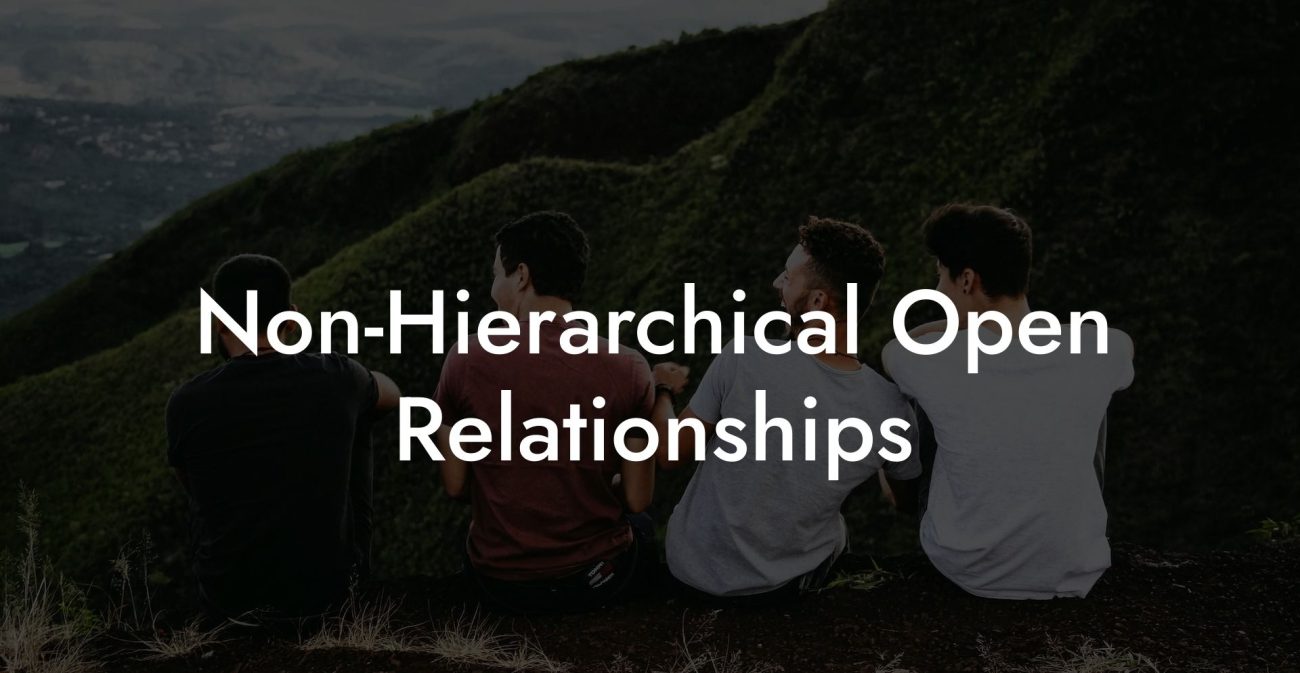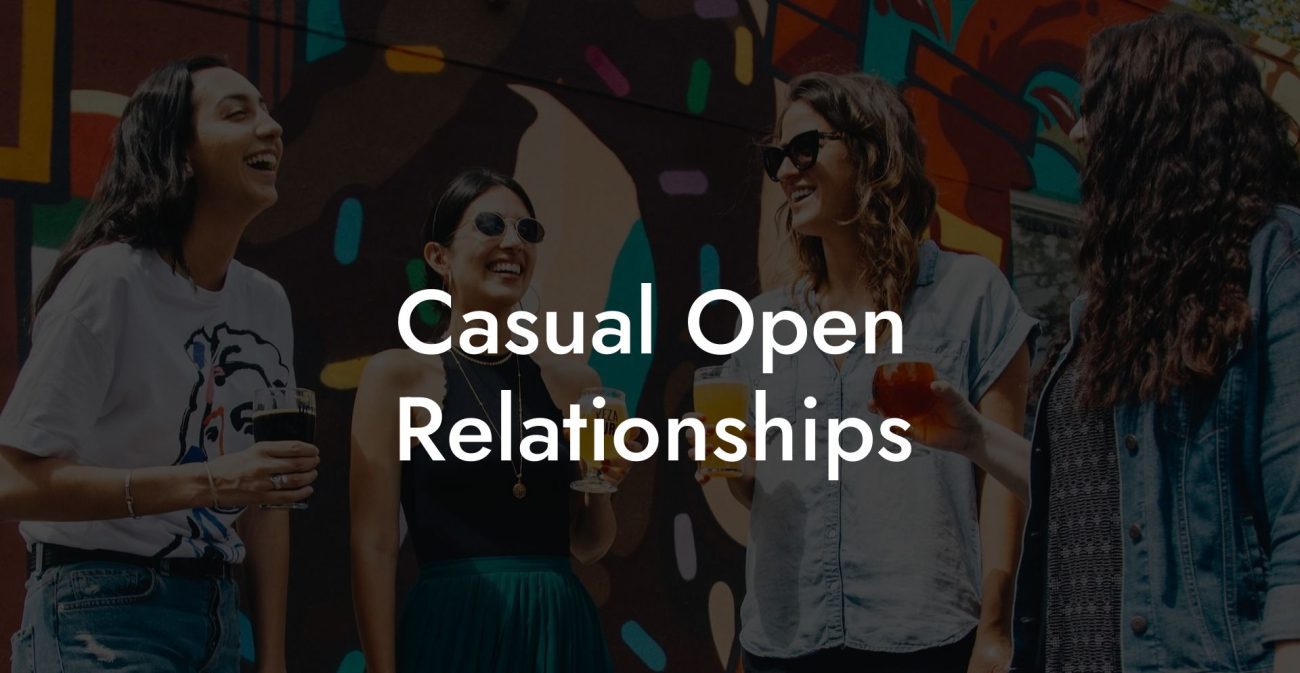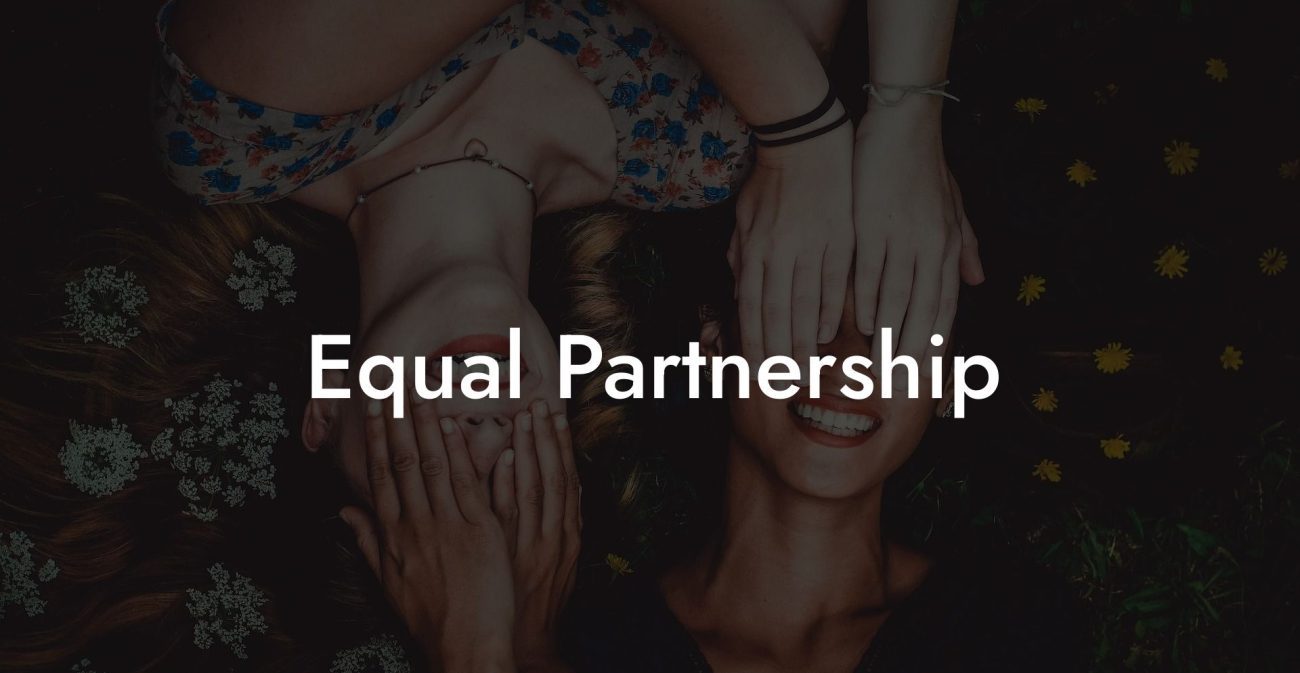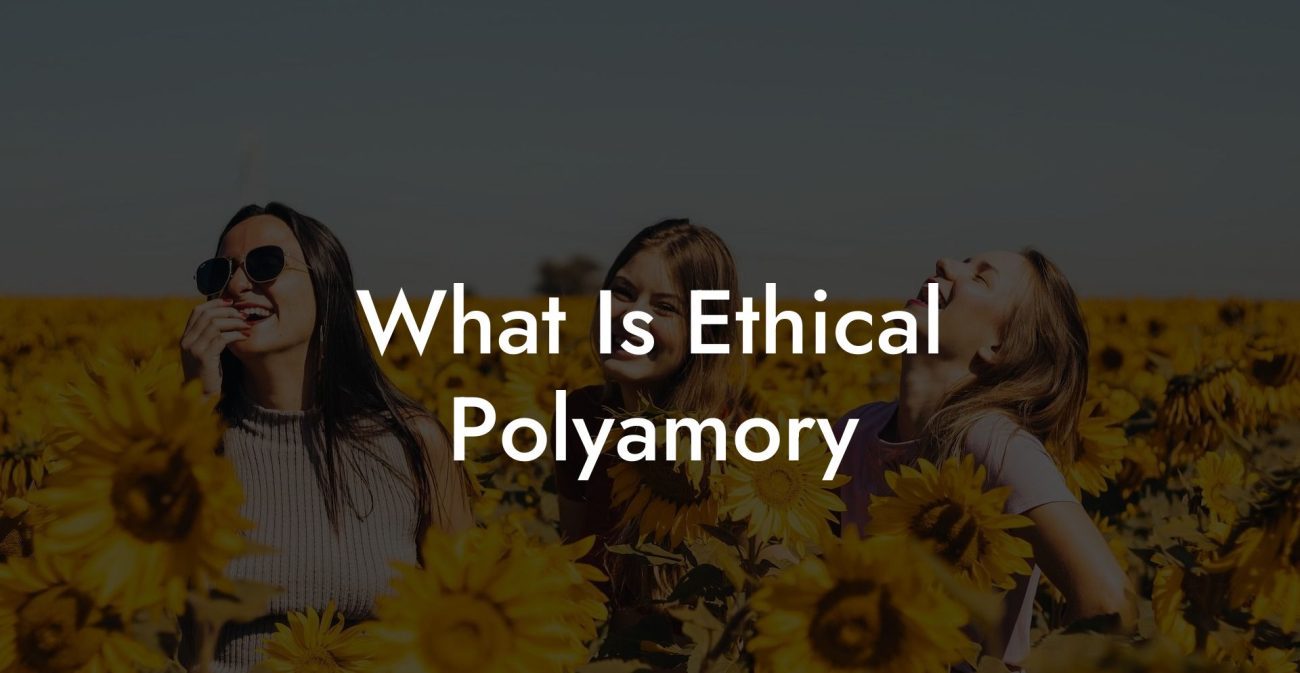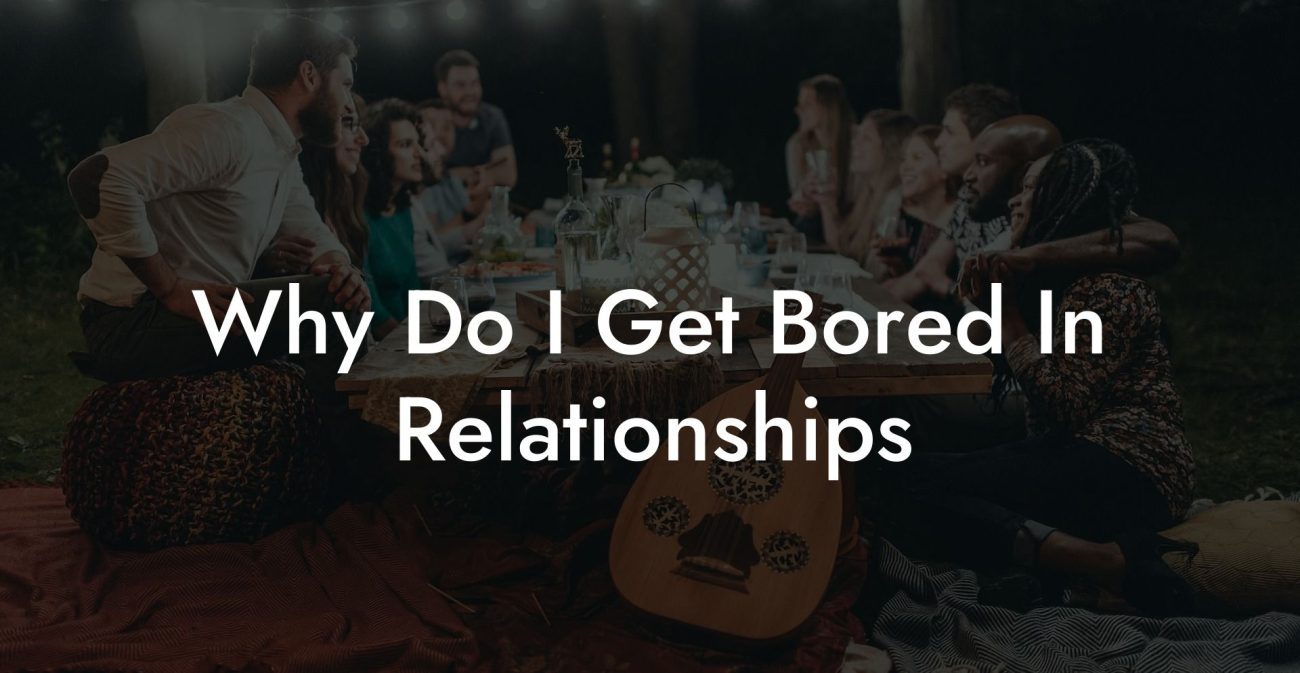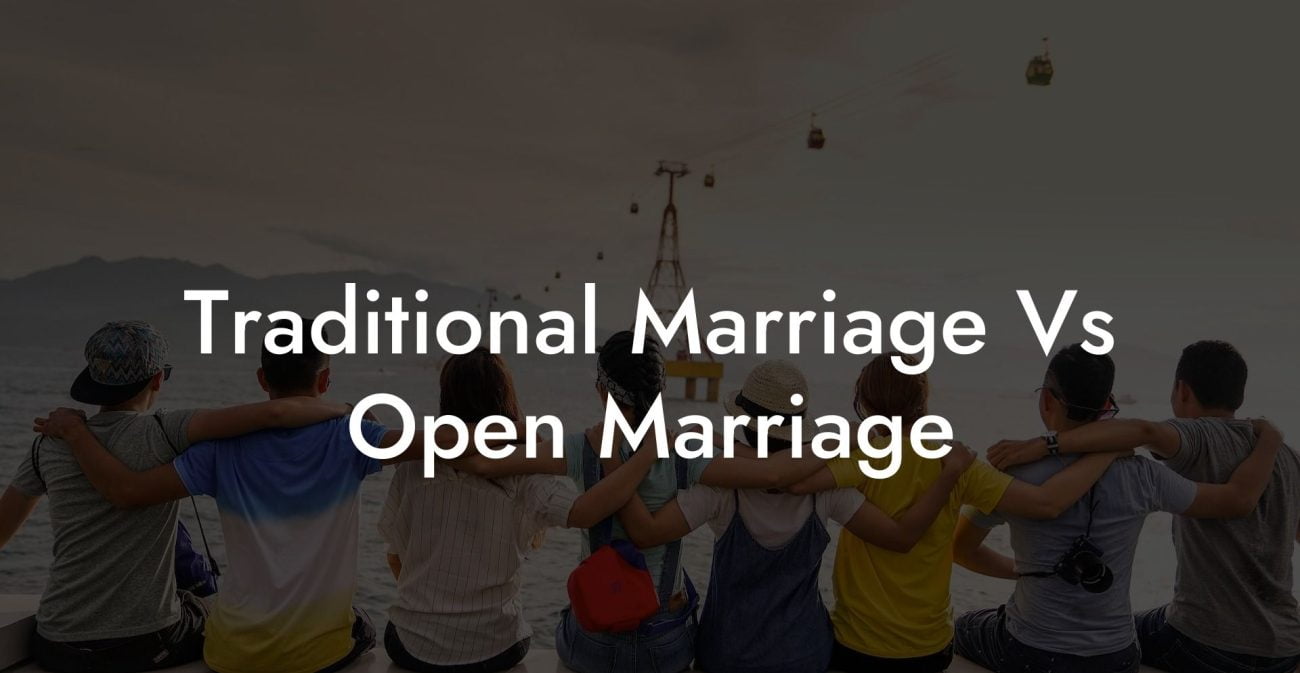Open Relationship vs Polyamorous: Key Differences
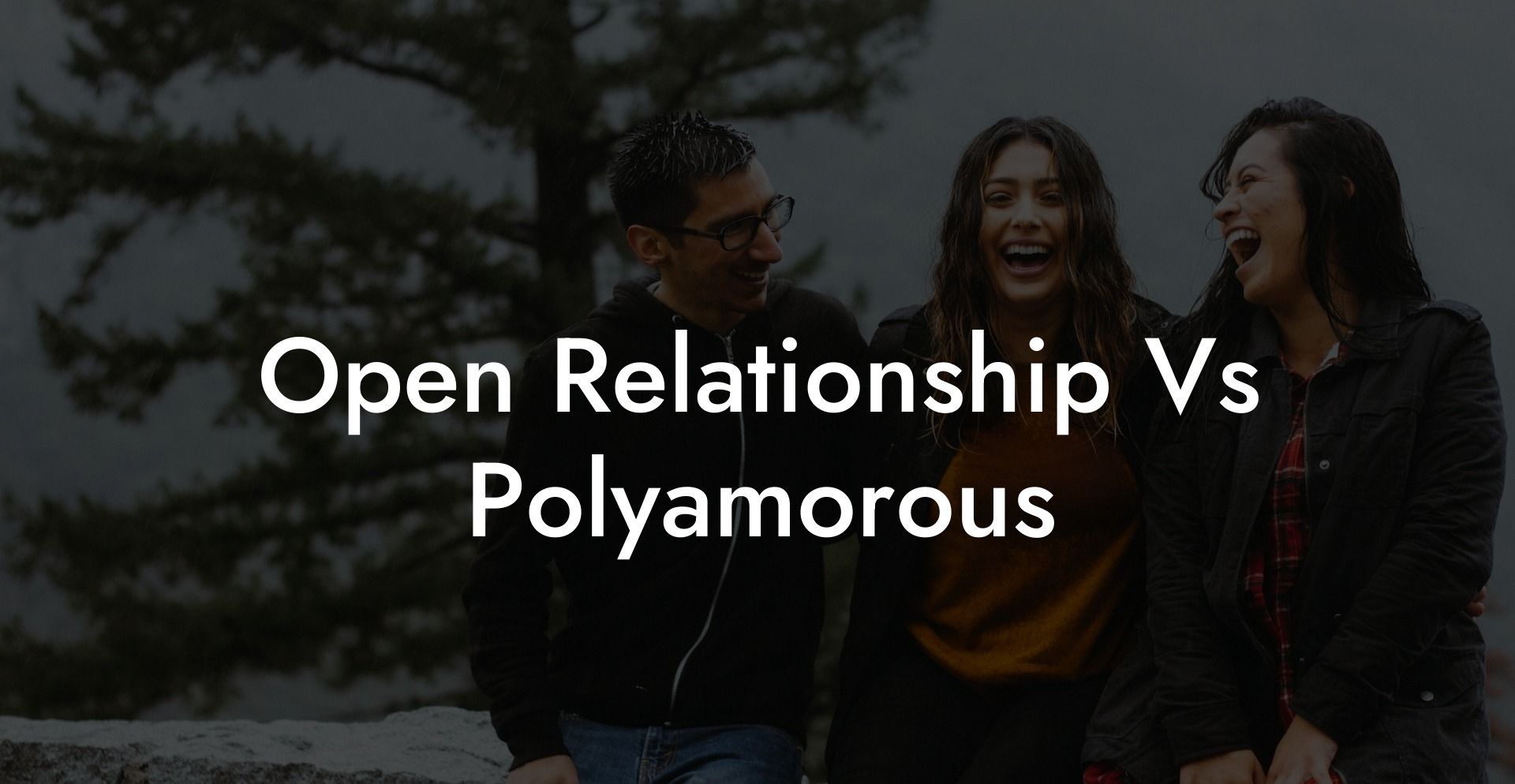
In today’s evolving landscape of intimate partnerships, many individuals explore relationship models beyond traditional monogamy. Two popular models that often spark confusion are open relationships and polyamory. Although both involve consensual non-monogamy, they differ significantly in structure, commitment, communication, and overall relationship dynamics. This guide will help you understand each concept, compare their key features, and explore the benefits and challenges associated with both, so you can make informed decisions about which model may align best with your personal values and lifestyle.
Have you ever wondered if monogamy is just a stupid little experiment? Open relationships, polyamory, relationship anarchy...find out which relationship dynamic suits you best with our one minute relationship test. See if you are just conforming to "societal norms". Reveal your truth >>
Quick Links to Useful Sections
- Understanding Open Relationships
- Definition and Core Principles
- Common Features and Variations
- Understanding Polyamory
- Definition and Core Concepts
- Variations Within Polyamory
- Key Differences Between Open Relationships and Polyamory
- Structure and Commitment
- Communication and Negotiation
- Emotional and Psychological Dynamics
- Legal and Social Recognition
- Benefits and Challenges
- Benefits of Open Relationships
- Benefits of Polyamory
- Challenges in Open Relationships
- Challenges in Polyamorous Relationships
- Practical Strategies for Navigating Both Models
- Enhance Communication
- Set Clear Boundaries
- Prioritize Self-Care and Personal Growth
- Build a Supportive Community
- FAQ: Your Monogamy vs Polygamy Questions Answered
Understanding Open Relationships
Definition and Core Principles
An open relationship is a consensual arrangement in which a couple agrees that one or both partners may engage in sexual or romantic relationships outside of their primary partnership. The foundation of an open relationship is built on mutual consent, clear boundaries, and honest communication. Unlike traditional monogamous models, open relationships allow partners the freedom to explore additional connections while still prioritizing their primary bond.
Key principles of open relationships include:
- Mutual Consent: All parties are fully aware of and agree to the arrangement.
- Transparent Communication: Open and ongoing dialogue ensures that expectations and boundaries are clearly defined and respected.
- Flexibility: The structure of the relationship can evolve based on the changing needs and desires of each partner.
- Autonomy: Individuals maintain their personal freedom and independence, even as they nurture their primary relationship.
Common Features and Variations
Open relationships can vary widely. For some couples, the arrangement may involve only occasional sexual encounters with others, while for others, it can include both romantic and sexual relationships outside the primary bond. Some common variations include:
- Sex-Only Open Relationships: Partners engage in sexual experiences with others while keeping emotional relationships exclusive.
- Emotional and Sexual Open Relationships: Both sexual and romantic connections outside the primary relationship are permitted.
- Flexible Arrangements: Couples may choose to negotiate different rules as their relationship evolves over time.
Understanding Polyamory
Definition and Core Concepts
Polyamory is the practice of engaging in multiple consensual romantic or sexual relationships simultaneously, where all involved are aware of and agree to the arrangement. The term “polyamory” comes from the Greek “poly,” meaning many, and the Latin “amor,” meaning love, emphasizing that love can be abundant and not limited to one person.
Core concepts in polyamory include:
- Consensual Non-Monogamy: Every relationship is formed with the full knowledge and agreement of all partners.
- Open Communication: Regular, honest dialogue is essential for negotiating boundaries, managing emotions, and ensuring that everyone’s needs are met.
- Varied Relationship Structures: Polyamory can be hierarchical, with primary and secondary partners, or non-hierarchical, where all relationships are considered equal.
- Emotional Depth: While some polyamorous relationships are casual, many participants seek deep, long-term connections with multiple people simultaneously.
Variations Within Polyamory
Polyamory encompasses a wide range of relationship configurations. Common variations include:
- Hierarchical Polyamory: Where one relationship is considered primary, with additional secondary or tertiary relationships.
- Non-Hierarchical Polyamory: All relationships are viewed as equal, without any designated priority.
- Solo Polyamory: Individuals maintain multiple relationships while prioritizing their independence and personal autonomy.
- Relationship Anarchy: A model that rejects traditional labels and hierarchies, allowing relationships to form organically based solely on personal connection and mutual consent.
Key Differences Between Open Relationships and Polyamory
Structure and Commitment
One of the primary distinctions between open relationships and polyamory is the structure of commitment:
EXPLORE OUR ETHICAL NON-MONOGAMY & OPEN RELATIONSHIP SHOP
👨💻👩💻 Digital Store (Instant Download)
🍆💦 Clothing Store (Worldwide Delivery Available)
Three Isn't a Crowd Unisex T-Shirt (Black)
$29.99I Love Watching Pop Art T-Shirt (Black)
$29.99It's Not Cheating If He Watches T-Shirt (Black)
$29.99Real Men Share Pop Art T-Shirt (White)
$29.99Three Isn't a Crowd Unisex T-Shirt (White)
$29.99Sharing Is Caring Daddy Cap (Black)
$39.99Multiple Lovers - Sharing Is Caring Unisex T-Shirt (Black)
$29.99Sharing Is Caring Unisex T-Shirt (Black)
$29.99Fuck Each Other Not The Planet Unisex T-Shirt (White)
$29.99Fuck Each Other Not The Planet Unisex T-Shirt (Black)
$29.99Real Men Share Pop Art T-Shirt (Black)
$29.99I Love Watching Pop Art T-Shirt (White)
$29.99- Open Relationships: Typically involve a primary couple that agrees to allow sexual and/or romantic interactions with others. The focus is on maintaining the core bond while exploring additional connections on a more flexible or casual basis.
- Polyamory: Involves forming multiple meaningful, often long-term relationships simultaneously. Each relationship is acknowledged and nurtured, and there may be a network of interrelated partnerships with varying levels of commitment.
Communication and Negotiation
While both models require robust communication, the nature of the dialogue can differ:
- Open Relationships: Focus on establishing clear rules and boundaries for external sexual encounters, often prioritizing the maintenance of the primary relationship.
- Polyamory: Requires ongoing, multi-directional communication among all partners to negotiate emotional needs, establish agreements, and resolve conflicts. The complexity of managing several relationships often demands a higher level of communication skills and emotional intelligence.
Emotional and Psychological Dynamics
The emotional dynamics in each model reflect their distinct structures:
- Open Relationships: May focus more on sexual exploration and occasional emotional connections with outside partners, while maintaining a primary emotional bond.
- Polyamory: Involves forming multiple deep, emotionally intimate connections. This often requires managing feelings such as jealousy and compersion (joy when a partner experiences happiness with someone else) in a more integrated and ongoing way.
Legal and Social Recognition
Neither open relationships nor polyamorous arrangements are typically recognized by law in the same way that monogamous marriages are. However, social perceptions can differ:
- Open Relationships: Often viewed as a flexible, modern alternative that allows couples to explore additional sexual or romantic experiences without altering their core commitment.
- Polyamory: Is increasingly recognized in progressive circles as a valid and fulfilling way to form intimate relationships, although it still faces challenges due to its complexity and the lack of legal frameworks.
Benefits and Challenges
Benefits of Open Relationships
Some of the potential benefits include:
- Preservation of the Primary Bond: Couples maintain their core relationship while enjoying additional sexual or romantic variety.
- Flexibility and Exploration: The structure allows for sexual exploration without the pressure of forming deep emotional bonds outside the primary relationship.
- Simplicity in Negotiation: The focus is often on clear, negotiated boundaries regarding sexual encounters.
Benefits of Polyamory
Polyamorous relationships offer a different set of advantages:
- Diverse Emotional Support: Multiple relationships provide a rich network of care and support.
- Personal Growth: Managing several relationships can lead to increased self-awareness, improved communication skills, and enhanced emotional intelligence.
- Variety in Intimacy: Individuals can explore different aspects of love and connection, which can be both enriching and transformative.
Challenges in Open Relationships
Challenges may include:
- Jealousy: Even with clear boundaries, feelings of jealousy can arise and require careful management.
- Time Management: Balancing personal time with time spent with outside partners can be difficult.
- Communication Hurdles: Maintaining open dialogue requires consistent effort from all parties involved.
Challenges in Polyamorous Relationships
Common challenges include:
- Emotional Complexity: Navigating multiple deep emotional connections can lead to conflicts and require advanced communication skills.
- Boundary Negotiation: Establishing and maintaining clear boundaries across several relationships is often more complex than in a dyadic relationship.
- Social Stigma: Polyamorous individuals may still face misunderstanding and judgment from those who adhere to traditional relationship norms.
Practical Strategies for Navigating Both Models
Enhance Communication
Regardless of the model, effective communication is essential. Consider:
- Scheduling regular check-ins with your partner(s) to discuss feelings, expectations, and boundaries.
- Using digital tools like shared calendars and group chats to coordinate schedules and communicate openly.
- Practicing active listening and nonviolent communication techniques to ensure that everyone’s perspective is respected.
Set Clear Boundaries
Whether you are in an open relationship or practicing polyamory, establishing and maintaining clear boundaries is key to preventing misunderstandings and managing emotional dynamics. Develop written or digital agreements that outline:
- Time allocations for primary and additional relationships.
- Expectations for sexual health and safe practices.
- Emotional boundaries and guidelines for conflict resolution.
Prioritize Self-Care and Personal Growth
Taking care of your own well-being is crucial for sustaining healthy relationships. Establish routines that support your physical, emotional, and mental health:
- Engage in regular exercise, meditation, or other mindfulness practices.
- Set aside time for hobbies and activities that recharge you.
- Consider professional counseling or therapy to develop emotional resilience and self-awareness.
Build a Supportive Community
Connect with others who share your relationship model through online forums, support groups, and local meet-ups. A strong community provides emotional support, practical advice, and validation:
- Join online communities such as r/polyamory or similar groups.
- Attend workshops and webinars focused on ethical non-monogamy and relationship dynamics.
- Engage with peers to share experiences and gain new insights.
FAQ: Your Monogamy vs Polygamy Questions Answered
1. What is a monogamous relationship?
A monogamous relationship is an exclusive partnership between two individuals who commit to being romantically and sexually involved only with each other.
2. What is a polygamous relationship?
A polygamous relationship involves one individual having multiple spouses at the same time, typically in the form of polygyny or polyandry, often within a cultural or religious context.
3. How do monogamous and polygamous relationships differ in structure?
Monogamous relationships focus on a one-on-one exclusive bond, whereas polygamous relationships involve multiple marital unions that may be structured hierarchically or as an integrated family unit.
4. What are the legal differences between these models?
Monogamous marriages are legally recognized in nearly all countries, granting couples various rights and benefits. Polygamous marriages, however, are generally not recognized in Western legal systems and may only be permitted under customary or religious law in some regions.
5. How do the emotional dynamics differ between monogamous and polygamous relationships?
Monogamy tends to foster a focused, exclusive emotional bond, while polygamy offers a wider network of emotional support that requires advanced communication and negotiation skills to manage complexities such as jealousy.
6. Where can I find additional resources on these topics?
Additional resources include books such as "The Ethical Slut" by Dossie Easton & Janet Hardy and "More Than Two" by Franklin Veaux & Eve Rickert, podcasts like "Multiamory" and "Polyamory Weekly," and online communities such as r/polyamory.
Resources and Community Support: Your Next Steps
- "The Ethical Slut" by Dossie Easton & Janet Hardy – A seminal book on alternative relationship models that offers in-depth insights into ethical non-monogamy.
- "More Than Two" by Franklin Veaux & Eve Rickert – An extensive guide providing practical advice on managing relationship dynamics in both monogamous and polygamous models.
- Podcasts: Listen to "Multiamory" and "Polyamory Weekly" for engaging discussions and personal experiences regarding various relationship structures.
- Online Communities: Join forums like r/polyamory and specialized Facebook groups to exchange ideas and gain support.
- Workshops and Webinars: Attend events focused on relationship psychology and ethical non-monogamy to expand your knowledge and connect with like-minded individuals.
By exploring these resources and applying the practical strategies outlined in this guide, you can develop a clear, informed understanding of the key differences between monogamous and polygamous relationships. Embrace continuous learning, open dialogue, and self-reflection as you navigate the diverse landscape of love and commitment.
EXPLORE OUR ETHICAL NON-MONOGAMY & OPEN RELATIONSHIP SHOP
👨💻👩💻 Digital Store (Instant Download)
🍆💦 Clothing Store (Worldwide Delivery Available)
Sharing Is Caring Unisex T-Shirt (Black)
$29.99I Love Watching Pop Art T-Shirt (White)
$29.99I Love Watching Pop Art T-Shirt (Black)
$29.99Three Isn't a Crowd Unisex T-Shirt (White)
$29.99It's Not Cheating If He Watches T-Shirt (Black)
$29.99Real Men Share Pop Art T-Shirt (White)
$29.99Real Men Share Pop Art T-Shirt (Black)
$29.99Fuck Each Other Not The Planet Unisex T-Shirt (Black)
$29.99Three Isn't a Crowd Unisex T-Shirt (Black)
$29.99Multiple Lovers - Sharing Is Caring Unisex T-Shirt (Black)
$29.99Sharing Is Caring Daddy Cap (Black)
$39.99Fuck Each Other Not The Planet Unisex T-Shirt (White)
$29.99Lost & confused by all of the terms, types and seemingly made up 3 letter acronyms?? We've got you. Check out our Ethnical Non-Monogamy Dictionary >>
Useful Interruption: Not sure which relationship vibe fits you best? Take our Relationship Test, it’ll give you the real insight into your natural relationship style. Then, dive into our binge-worthy guides (from the tried-and-true to the “wait, that’s a thing?”) and find the perfect relationship type for your life:
- Monogamy
- Open Relationships
- Ethical Non-Monogamy
- Solo Polyamory
- Non-Hierarchical Polyamory
- Hierarchical Polyamory
- Relationship Anarchy
- Swinging
Now back to the main article but yeah take the test...

